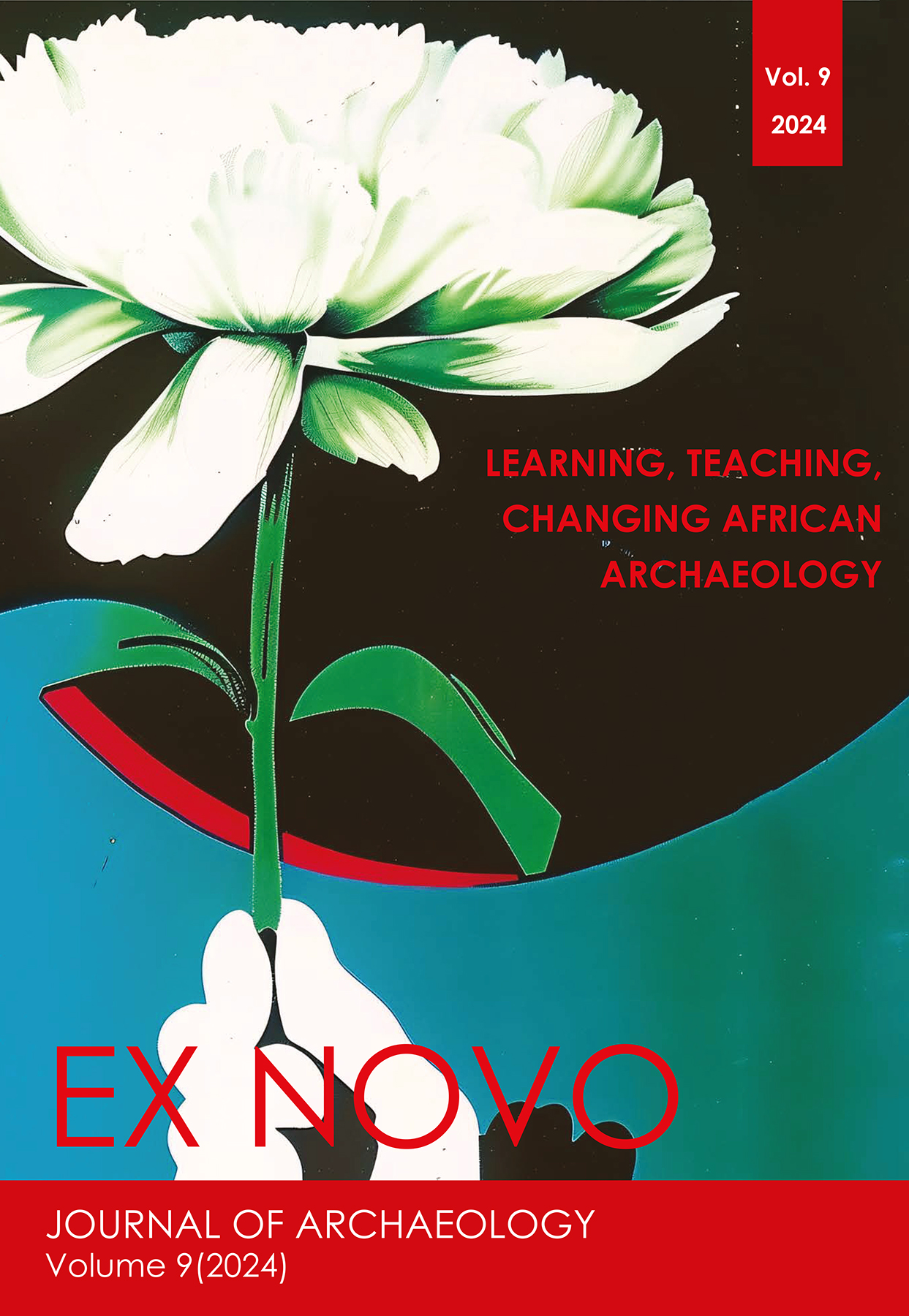The Historic Sebou Basin: An asset of universal value
DOI:
https://doi.org/10.32028/exnovo-vol-9-pp.5-21Keywords:
UNESCO Heritage, Cultural Exchange, Sebou River, Natural Harmony, Sustainable DevelopmentAbstract
The Sebou Basin, located in northern Morocco, stands as a cultural and natural heritage of universal significance, demonstrating the interplay between various civilisations and a rich environment. This region is home to prominent sites such as Banasa, Thamusida, Rirha, and Mehdia, reflecting periods from prehistory to the Islamic and modern eras. Archaeological discoveries highlight cultural exchanges among Phoenicians, Romans, Mauretanians, and Islamic dynasties.
The Sebou River, a central pillar of the region, has been pivotal in fostering the growth of early settlements, trade hubs, and agricultural infrastructure since antiquity. This area also exemplifies harmony between natural heritage and human activity, housing protected areas like the Sidi Boughaba Reserve, renowned for its unique biodiversity and its role in environmental education.
UNESCO recognition would enhance the preservation of these treasures and promote sustainable development while celebrating a rich history where nature and culture interweave.
References
AHMED S., L'Image de la Tingitane. L'historiographie arabe médiévale et l'Antiquité nord-africaine. École Française de Rome, 1995.
ATKI M., Cité de légende: Pourquoi la Bassora marocaine a disparu ? Zamane Magazine, 11 juin 2020.
AKERRAZ A. 2010, Les fortifications de la Mauritanie Tingitane. Comptes rendus des séances de l'Académie des Inscriptions et Belles-Lettres 154 (1): 539-561.
AKERRAZ, A., El KHAYARI, A., PAPI E., 2009. L'habitat maurétano-punique de Sidi Ali ben Ahmed - Thamusida (Maroc), in: S. HELAS, D. MARZOLI (Eds.), Phönizisches und punisches städtewesen. Iberia Archaeologica, Band 13: Mainz, Iberia Archaeologica: 147-170.
CAMPOREALE S., 2011. Military Building Techniques in Mauretania Tingitana: The Use of Mortar and Rubble at Thamusida, in: A. Ringbom, R.L. Hohlfelder (Eds.), Building Roma Aeterna : current research on Roman mortar and concrete : proceedings of the conference, March 27-29, 2008, Helsinki: Societas Scientiarum Fennica: 169-186.
CHAFIK T. BENCHEKROUN, 2016, Les Idrissides entre Fatimides et Omeyyades. Revue des mondes musulmans et de la Méditerranée 139: 29-50.
EUSTACHE D., 1955. El-Basra. Capitale idrisside et son port. Hespéris XLII, 1955: 230.
DESPOIS J., RAYNAL R. 1967, Géographie de l’Afrique du nord-ouest, Paris.
PAPI E., A. AKERRAZ, SIDI ALI BEN, A. - Thamusida 1. I contesti, Quasar, 2008.
ROCCA E., CARRATO Ch., KBIRI ALAOUI M, ICHKHAKH, RIRHA A., 2019. (Sidi Slimane, Maroc). Rapport de mission 2018: Madrid, Casa de Velázquez.
EUZENNAT, M., 1989. Le Limes de Tingitane. La frontière méridionale: CNRS, Paris.
CAMPS G., GHARB, X., 1998. Encyclopédie Berbère, 20: Edisud, Aix en provence.
GLIOZZO E., CERRI L., DAMIANI D., MEMMI I., 2005. Amphora production and salsamenta trade: the case of Thamusida (Rabat, Morocco), in: Atti del III Congresso Nazionale AIAR "L'archeometria in Italia: la scienza per i Beni Culturali: Bologna: Patron Editore: 203-2013.
SOUVILLE G., 1973. Atlas préhistorique du Maroc, 1. Le Maroc atlantique: CNRS, Paris.
HEAD B., 1911, "Mauretania", Historia Numorum (2nd ed.), Oxford: Clarendon Press.
ROUX J.-Cl., CAMMAS C., 2016. Stratigraphie et Bâti, in: Rirha (Ed.), Site Antique et Médiéval du Maroc. II Période Maurétanienne (Ve siècle av. J.-C. - 40 ap. J.-C.), Collection de la Casa de Velazquez, Vol. 151, Madrid.
L’Africain, J.L, 1956, Description de l’Afrique., trad. Epaulard, Paris: Libraire d’Amerique et D’Orient.
CALLU J. P., MOREL, J. P., REBUFFAT, R., HALLIER, G. MARION, J., 1966. Thamusida, Mélanges d'archéologie et d'histoire 43 (1-2).
LE TOURNEAU, R., 1960. Gharb, in: Encyclopédie de l’Islam. Second edition. Volume 2: Leiden: Brill; 1008.
LE COZ J., 1964, Le Rharb, Fellahs et colons. Étude de géographie régionale: Rabat.
CALLEGARIN, L., ICHKHAKH, A., KBIRI ALAOUI, M., ROUX, J.C., 2016. L'implantation humaine à l'époque préromaine (VIIe s. av. J.-C. - 40 ap. J.-C.), in: Rirha (Ed.) Site Antique et Médiéval du Maroc. II Période Maurétanienne (Ve siècle av. J.-C. - 40 ap. J.-C.). Collection de la Casa de Velazquez, Vol. 151, Madrid.
Downloads
Published
How to Cite
Issue
Section
License
Copyright (c) 2025 Associazione Ex Novo

This work is licensed under a Creative Commons Attribution-NonCommercial-NoDerivatives 4.0 International License.






